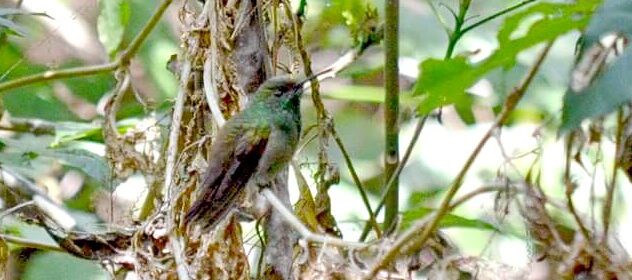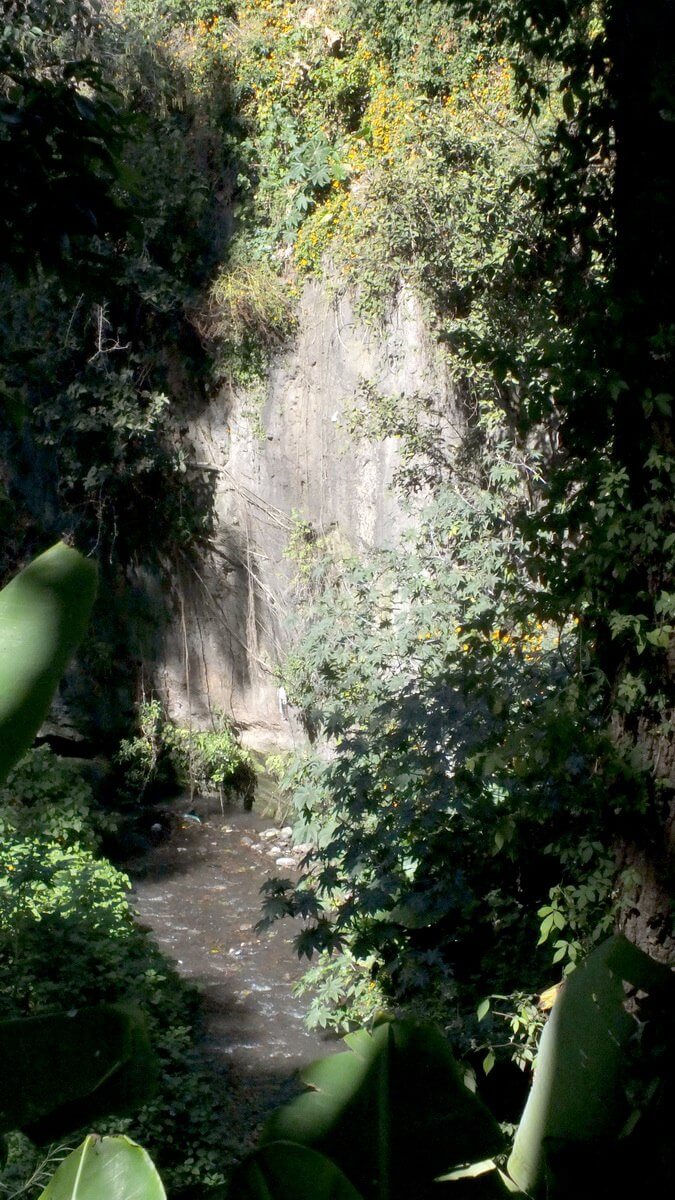Berylline Hummingbird at Hotel Rancho San Cayetano

During the course of our stay at Hotel Rancho San Cayetano in Zitacuaro, Mexico, Bob and I observed several different species of hummingbirds, but it always seemed that they were either far away or prone to disappear as soon as we got near. On our hike down to the river adjacent to the hotel, we came across this Berylline Hummingbird basking in the morning sun.
Being our first morning on the ground in Mexico, it didn’t take much to convince Bob and me that breakfast on the patio was a good idea. We dressed in layers to ward off the chilly air, and savoured every bite of the delicious food prepared by Lisette and her staff.
After a hearty breakfast, Bob and I set off to discover the trail that leads from the primary level of the hotel property down into a wooded river valley. The air was full of birdsong punctuated by the odd crowing rooster, and sharp barks from one of the neighbour’s dogs alerted us to a small farming operation across the way.
There was no mistaking the tropical climes in which we found ourselves given the breadth of the leaves on many plants that flourished in the humid atmosphere of the riparian forest. Together with myriad wildflowers blooming along the trail, it was a veritable feast for the eyes.
Bob and I didn’t know what to expect as we neared the bottom of the steep trail, but we found that it opened up onto a wide riverbank where someone had planted a small plot of corn. The river could be seen through a small gap in the jungle-like vegetation,
and it was there that I spotted a Berylline Hummingbird perched on a thin vine. I saw no flowers in the immediate area and was happy for that because the hummingbird seemed content to stay in one place for a few seconds rather than flitting away to collect more nectar.
Bob had wandered a little further along the edge of the river, so I got his attention and flagged him over for a look. Despite the thin canopy of trees where we stood, the light seemed inadequate to really emphasize the iridescent olive green body, but the rufous-coloured plumage of the wings and tail could be detected.
In a matter of moments, the Berylline Hummingbird took to the air and landed on the far side of the babbling brook. It was no surprise, really, to find the hummingbird in that setting since this species is often found near streams in tropical deciduous forests. In Mexico, this species is widespread in the foothills and lower mountain slopes wherever pine and pine-oak forests exist.
Berylline Hummingbirds feed primarily on nectar from flowers or tree blossoms, and flowers, such as those visible in the bottom left corner of this photograph, would be of particular interest because of their bright red colour and tubular shape.
The long, slender bill of a Berylline Hummingbird houses an equally long tongue that is extendible. It is the straw-like tongue that enables the hummingbird to lick nectar from deep within tubular flowers while the bird hovers in the air.
Insects and spiders also make up part of the diet of a Berylline Hummingbird, especially during breeding season when more protein is required for the offspring. The hummingbirds either catch them in flight, known as hawking, or glean them from plants or even spider webs.
It was interesting to observe this Berylline Hummingbird that takes its name from the mineral beryl. Some deposits of beryl have a pretty aquamarine colour, and the plumage on these birds, when nicely lit, resembles the sea green gem. When Bob and I turned to climb out of the valley, the solitary hummingbird took no notice. It continued its sojourn there in the cool shadows of the tropical forest.
Frame To Frame – Bob and Jean











